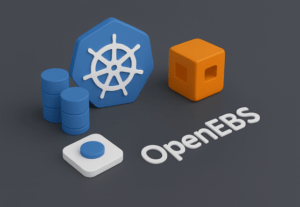Table of Contents
ToggleIntroduction.
In today’s rapidly evolving digital world, security has become a top priority for organizations of all sizes. As businesses shift toward cloud-native architectures, microservices, and distributed systems, the number of applications and services that require access to sensitive data has grown exponentially. Each of these applications depends on secrets credentials such as API keys, passwords, encryption keys, and tokens to function properly and communicate securely with other components. These secrets are the digital keys to your kingdom, granting access to critical systems, customer data, and infrastructure.
Unfortunately, many teams still manage secrets in insecure ways storing them in configuration files, embedding them in source code, or passing them around in chat messages and spreadsheets. It might seem harmless at first, but even a single exposed secret can lead to devastating breaches, unauthorized access, or service downtime. High-profile incidents in recent years have shown how leaked credentials can cost companies millions in damages, reputational loss, and compliance violations. In this context, secrets management isn’t just a best practice it’s a fundamental pillar of modern security strategy.
Secrets management is the process of securely storing, distributing, and accessing sensitive credentials in a controlled and auditable manner. It provides a centralized solution to the age-old problem of “who should have access to what, and when.” By implementing proper secrets management, teams can reduce the attack surface, eliminate hard-coded secrets, and automate the rotation of credentials. The goal is not only to protect secrets but also to ensure they are used responsibly and safely across environments.
Enter HashiCorp Vault, a powerful open-source tool designed to take the pain out of secrets management. Vault acts as a single source of truth for all your sensitive data, offering encryption, fine-grained access control, dynamic secret generation, and audit logging all wrapped in a flexible, API-driven platform. Instead of scattering credentials across multiple systems, Vault centralizes and secures them in one place, ensuring that applications, services, and humans can only access the secrets they truly need.
Whether you’re managing credentials for a small web app or orchestrating secrets across a global, multi-cloud infrastructure, HashiCorp Vault helps you establish a Zero Trust approach to authentication and authorization. It’s designed to integrate seamlessly with modern DevOps workflows, CI/CD pipelines, Kubernetes clusters, and cloud providers like AWS, Azure, and GCP. With Vault, you can move from reactive, manual secrets handling to proactive, automated security at scale.
In this beginner’s guide, we’ll explore the fundamentals of secrets management, uncover the problems it solves, and show you how HashiCorp Vault can help your team build a secure foundation for managing sensitive data. By the end, you’ll understand why effective secrets management is essential and how Vault empowers you to achieve it confidently, efficiently, and securely.

What Is Secrets Management?
In any modern IT environment, applications, services, and users rely on credentials commonly known as secrets to communicate securely and perform critical operations. A “secret” is any piece of sensitive data that grants access to a system, application, or resource. Examples include API keys that connect to third-party services, database usernames and passwords, cloud access tokens, SSH keys, TLS certificates, and encryption keys that protect confidential information. These credentials are the invisible glue that holds digital systems together, enabling secure connections, authentication, and authorization across infrastructure.
As organizations scale, the number of secrets they must manage grows exponentially. Each microservice, automation script, and CI/CD pipeline may require its own set of credentials. Managing these secrets manually or storing them in plain text quickly becomes risky and unsustainable. It’s not uncommon to find secrets hard-coded in configuration files, environment variables, or even source code repositories. When these credentials are exposed, either through human error or security breaches, attackers can gain unauthorized access to sensitive systems, databases, and customer data. The consequences can be severe, leading to data leaks, financial loss, regulatory penalties, and long-term reputational damage.
Secrets management is the discipline of securely storing, accessing, and controlling secrets throughout their lifecycle. It involves using centralized systems and processes to protect credentials from unauthorized exposure, while ensuring they are easily accessible to applications and users that legitimately need them. Instead of scattering secrets across multiple locations, secrets management introduces a single source of truth a dedicated platform where all sensitive data is encrypted, monitored, and controlled through well-defined policies.
The goal of secrets management is twofold: security and efficiency. On one hand, it protects secrets using encryption, authentication, and access control mechanisms; on the other, it enables teams to manage and rotate those secrets automatically, reducing human error and operational friction. This automation ensures that secrets remain fresh, temporary, and traceable eliminating the need for long-lived credentials that can easily be compromised.
Effective secrets management also aligns with the principles of Zero Trust security, where no entity human or machine is inherently trusted. Every access request must be authenticated, authorized, and logged. This means even internal systems must prove their identity before accessing sensitive information. By implementing secrets management, organizations can adopt a proactive security model that limits the blast radius of potential breaches and enhances overall visibility into how secrets are used.
Modern secrets management solutions, like HashiCorp Vault, extend these principles even further. Vault not only stores static secrets but can also generate dynamic secrets short-lived credentials that are created on demand and automatically revoked after a set period. This dramatically reduces the risk of credential leaks and simplifies compliance, as it provides detailed audit logs and fine-grained policy enforcement.
Secrets management transforms the way organizations handle sensitive data. It replaces insecure practices with structured, automated, and auditable processes that fit seamlessly into modern DevOps workflows. By centralizing control, enforcing least-privilege access, and automating secret rotation, teams can strengthen their security posture without sacrificing agility.
Secrets management isn’t just about keeping passwords safe it’s about building trust, reducing risk, and enabling secure innovation. As systems become more interconnected and cloud environments more dynamic, having a robust secrets management strategy is not optional; it’s essential for maintaining security, compliance, and reliability at scale.
Why Traditional Methods Fail.
Before modern secrets management solutions like HashiCorp Vault existed, most development teams relied on simple, manual, and often insecure methods to store and share sensitive credentials. While these approaches may seem convenient, they introduce a wide range of security vulnerabilities and operational challenges that can lead to serious consequences. Understanding why these traditional methods fail is the first step toward building a more secure, scalable, and automated system for managing secrets.
One of the most common mistakes is storing secrets directly in source code. Developers often embed API keys, database credentials, or encryption keys into configuration files, scripts, or environment variables for quick access during development. Unfortunately, these secrets can easily end up in version control systems like GitHub or GitLab, where they may become publicly accessible or shared with unauthorized users. Even private repositories are not immune internal leaks, compromised accounts, and misconfigured access controls can all expose sensitive credentials. Once a secret is committed to version control, it’s practically impossible to erase every copy of it, making this approach inherently risky.
Another traditional method involves using plain-text configuration files or .env files to store secrets on servers or developer machines. While this may simplify application setup, it leaves secrets vulnerable to theft if the system is compromised. A single misconfiguration, backup leak, or unauthorized access can expose all the credentials stored in those files. Moreover, rotating or updating secrets in these files is a manual process, often requiring system restarts, code changes, or redeployments all of which increase the risk of human error and downtime.
Some teams also rely on environment variables to manage secrets, believing this approach to be more secure. However, environment variables can still be viewed by anyone with access to the runtime environment, logs, or debugging tools. In shared or containerized environments, this becomes even more problematic, as secrets may be inadvertently inherited by unrelated processes or exposed in stack traces and system outputs. This lack of isolation makes environment variables an insufficient long-term solution for secure secret storage.
Email, chat applications, and spreadsheets are also frequently and dangerously used to share secrets between team members. While convenient, these tools were never designed for secure data transmission. Credentials sent through unsecured channels can be intercepted, copied, or accidentally forwarded, creating an uncontrolled sprawl of sensitive information. Once secrets are distributed across multiple communication platforms, tracking, auditing, and revoking them becomes nearly impossible.
Traditional methods also fail because they lack centralized management and visibility. Each system or team might store and manage secrets differently, resulting in inconsistencies and duplicated credentials. This decentralized approach makes it difficult to enforce access controls, monitor usage, or respond quickly to incidents. When an employee leaves the company or an application is decommissioned, there’s often no clear process for revoking their access or rotating their credentials, leaving potential entry points open for attackers.
Another major shortcoming of manual secret management is the lack of automation. Without automated rotation, credentials often remain static for months or even years. Static secrets are particularly dangerous because they provide long-term access if an attacker obtains one, they can move laterally within systems without being detected. Rotating secrets manually across multiple applications, databases, and environments is not only time-consuming but also prone to mistakes that can break dependencies or disrupt services.
Finally, traditional methods offer little to no auditability or traceability. Security teams cannot easily determine who accessed which secret, when it was accessed, or whether it was modified. This lack of transparency makes compliance with regulations such as GDPR, HIPAA, and SOC 2 extremely difficult. In a modern environment where accountability and monitoring are essential, this blind spot is unacceptable.
Traditional secrets management practices fail because they are insecure, manual, and unscalable. They rely too heavily on human intervention, lack centralized control, and provide no real-time visibility into secret usage. As organizations grow and their infrastructure becomes more complex, these outdated methods quickly turn into ticking time bombs waiting for a single misstep to trigger a breach.
To overcome these limitations, businesses must adopt a centralized, automated, and auditable secrets management system. Tools like HashiCorp Vault address these challenges by securely storing secrets, controlling access through fine-grained policies, and automating rotation and auditing ensuring that secrets remain both protected and manageable in today’s dynamic environments.
Introducing HashiCorp Vault.
As organizations outgrow traditional methods of managing secrets, the need for a centralized, secure, and automated solution becomes undeniable. HashiCorp Vault was created to solve this exact problem providing a unified platform for managing sensitive information across diverse systems, environments, and cloud providers. Vault acts as a digital fortress for secrets, ensuring that credentials, encryption keys, and access tokens are always stored, accessed, and distributed safely.
At its core, Vault is designed around the principles of least privilege, encryption, and automation. It encrypts all data at rest and in transit, ensuring that even if the underlying storage or network is compromised, secrets remain protected. Access to secrets is controlled through a powerful policy framework, enabling administrators to define exactly who or what can access specific information. This fine-grained access control minimizes risk and ensures compliance with internal and external security standards.
One of Vault’s most powerful features is its ability to generate dynamic secrets temporary credentials created on demand for databases, cloud services, or messaging systems. Instead of reusing static passwords, Vault can issue short-lived credentials that automatically expire, reducing the attack surface and simplifying secret rotation. This capability transforms secrets management from a reactive task into a proactive, automated process.
Vault also supports multiple authentication methods, such as tokens, AWS IAM roles, Kubernetes service accounts, and AppRole, allowing both humans and applications to securely authenticate without embedding long-term credentials. Additionally, its audit logging and telemetry features provide full visibility into secret usage, helping organizations meet compliance and governance requirements.
Beyond secret storage, Vault extends into encryption as a service, enabling applications to perform cryptographic operations such as data encryption and decryption without exposing keys. This makes it an essential building block for implementing Zero Trust architectures, where every access request must be verified and authorized.
HashiCorp Vault is more than just a secrets manager it’s a comprehensive security platform designed to bring order, automation, and visibility to how sensitive data is handled across modern infrastructures.
Key Features of HashiCorp Vault
- Secure Secret Storage – Encrypts secrets at rest and in transit.
- Dynamic Secrets – Generates credentials on-demand (e.g., temporary database users).
- Fine-Grained Access Control – Uses policies and authentication methods to control access.
- Audit Logging – Provides detailed logs for compliance and monitoring.
- Encryption as a Service – Offers cryptographic operations without exposing keys.
How Vault Works (Simplified)
Here’s the high-level flow of how Vault operates:
- Initialization & Unsealing: Vault starts sealed; it must be unsealed using keys to decrypt its data.
- Authentication: Clients (apps, users, CI/CD tools) authenticate via supported methods e.g., tokens, AWS IAM, or Kubernetes Service Accounts.
- Access Control: Vault checks policies to determine what secrets the client can access.
- Secret Delivery: Vault returns the secret (optionally generating it dynamically).
- Audit: The access request and response are logged for traceability.
Getting Started: Your First Secret in Vault
Let’s walk through a simple example using Vault in development mode:
# Start Vault in dev mode
vault server -dev
In a new terminal, set the Vault address and token (displayed in the server logs):
export VAULT_ADDR='http://127.0.0.1:8200'
export VAULT_TOKEN='root'
Now, store a secret:
vault kv put secret/myapp api_key=12345
Retrieve it:
vault kv get secret/myapp
Output:
====== Metadata ======
Key Value
--- -----
api_key 12345
You’ve just securely stored and retrieved a secret using Vault!

Best Practices for Using Vault
- Never use the root token in production.
- Automate secret rotation (especially for DB and cloud credentials).
- Use dynamic secrets wherever possible.
- Implement least-privilege access policies.
- Integrate Vault with CI/CD tools for secure secret injection.
The Bigger Picture
HashiCorp Vault doesn’t just solve the “where do we put secrets” problem it enables a Zero Trust security model, where every access request is authenticated and authorized.
By centralizing secret management, organizations can reduce risk, simplify compliance, and give developers a secure, consistent way to handle sensitive data.
Final Thoughts
Secrets management is no longer optional it’s a fundamental part of modern security. Tools like HashiCorp Vault help teams scale securely, automate credential lifecycles, and gain visibility into who’s accessing what.
Whether you’re securing your first microservice or managing hundreds of cloud workloads, Vault provides the foundation for a safer, more auditable, and more efficient infrastructure.





